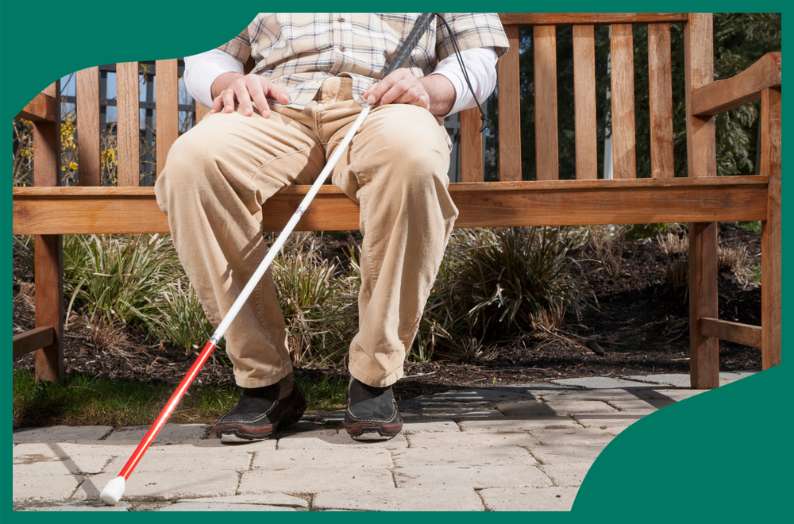Living alone as someone who is blind or has very limited sight might seem overwhelming at first. You might wonder: Can I handle daily tasks independently? How will I manage my home safely? These are valid concerns, but the answer is reassuring. Yes, you can absolutely live alone and thrive doing so. With the right skills, tools, and mindset, independent living is possible.
Many blind people successfully live alone, manage households, and even raise families. Through proper training, adaptive strategies, and assistive technology, you can build a routine that allows you to live confidently and independently.
You Can Live Alone With a Visual Impairment
Whether you have limited visual acuity or are completely blind, living independently is entirely achievable. However, like any major life transition, it takes preparation and adaptation. Many people who lose their sight later in life go through a period of adjustment, learning new ways to navigate their surroundings and complete daily tasks. Some of the keys to success include:
- Training in Independent Living Skills: Many organizations offer rehabilitation programs that teach essential skills for living alone, such as cooking safely, navigating public spaces, and using assistive technology.
- Support from the Blind Community: Connecting with others who have experienced sight loss can be a great source of encouragement and practical advice.
- Embracing Assistive Technology: Today’s smart devices, apps, and accessibility tools make daily life much more manageable for people who have lost their sight.
Daily Living Tips for Blind and Low Vision Individuals
Living alone with sight loss is completely possible with the right strategies and tools. Whether you’re adjusting to losing your sight or looking for ways to streamline your routine, these practical tips can help you maintain independence in your everyday life:
- Orientation and Mobility Training: Navigating your surroundings safely is key to independent living. Whether you’re learning to move through your home more effectively or building confidence to travel through your neighborhood, orientation and mobility (O&M) training can help you develop techniques tailored to your environment.
- Home Organization: Keeping your living space organized in a way that makes sense to you is important. Some practical tips include:
- Labeling food, commonly used items, and medications with braille.
- Using consistent storage locations for everyday items.
- Placing tactile stickers on key appliances (stove, microwave, washing machine).
- Keeping pathways clear to avoid tripping hazards.
- Cooking: Safety is always most important, but cooking independently is possible with the right adaptations. Consider:
- Using talking kitchen appliances like microwaves and thermometers.
- Organizing groceries and pantry items in a systematic way.
- Practicing safe knife skills and using adaptive tools like finger guards.
- Meal prepping in advance to make cooking easier throughout the week.
- Managing Daily Tasks: Cleaning, laundry, and handling finances are all manageable with a little planning. Some strategies include:
- Cleaning in a consistent pattern to ensure no area is missed.
- Organizing clothing by texture or color-coded labels.
- Paying bills and managing finances through online banking with screen readers.
Technology for Independent Living with Blindness
Technology has transformed what’s possible for people with visual impairments. Here are some game-changers:
- Smartphones and Apps: Tools like Be My Eyes, Seeing AI, and VoiceOver assist with reading text, identifying objects, and navigating daily life.
- Smart Home Devices: Voice-controlled assistants like Alexa and Google Home help with everything from setting timers to controlling lights.
- Adaptive Tech for Appliances: Tactile markers, talking scales, and braille-labeled household items make it easier to cook, clean, and manage household tasks.
Resources for Blind And Visually Impaired Individuals Living Alone
You don’t have to figure everything out on your own. Many organizations offer support and training to help people with sight loss live independently. Here are a few resources to look into:
- Blindness Rehabilitation Services: These programs provide skills training for daily living, cooking, mobility, and more.
- State and Local Services: Many states have programs that offer free assistive technology, mobility training, and financial assistance.
- Online and In-Person Communities: Connecting with others who understand your experience can be incredibly helpful.
Thriving on Your Own with Sight Loss
Living alone with sight loss is possible and it can be incredibly fulfilling. With the right training, support, and technology, you can maintain your independence and live life on your terms. If you’re in the process of adapting, remember: you’re not alone, and there are resources and communities ready to support you every step of the way. If you’re looking for more guidance, follow along on our blog for helpful tips, advice, resources, and stories that inspire and empower.






